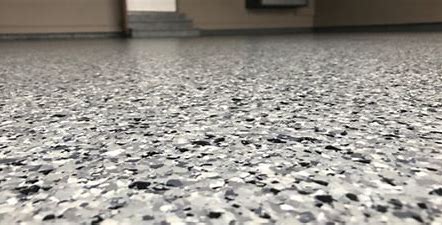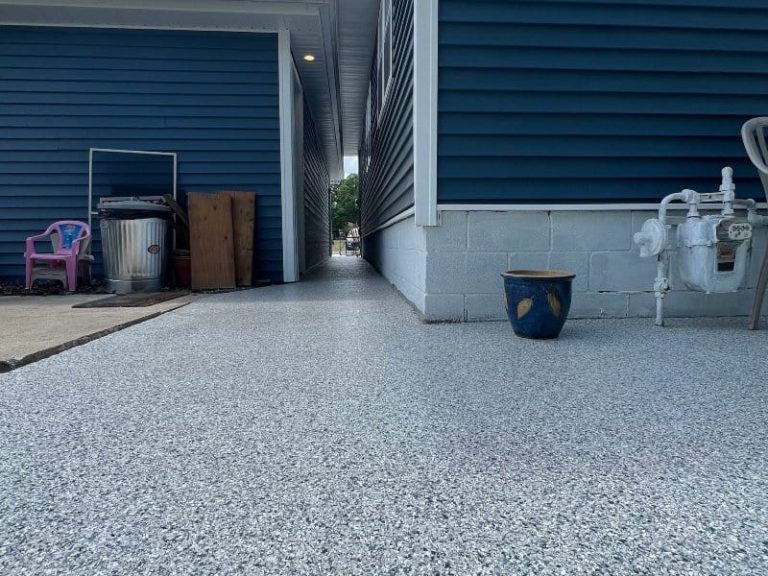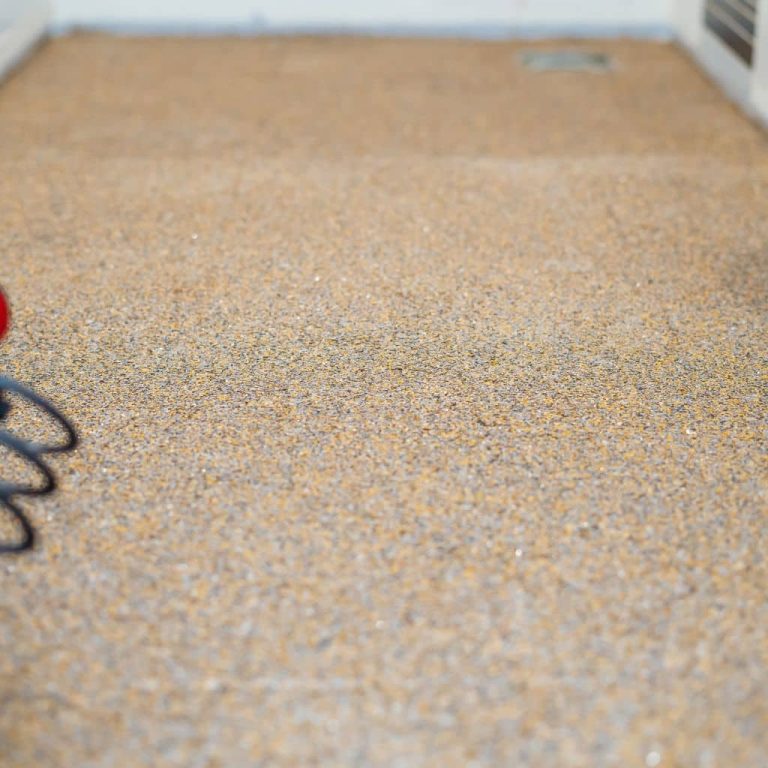When homeowners think of garage floor coatings, “epoxy” often comes to mind first. Yet, thanks to advancements in materials science, polyurea polyaspartic coatings have emerged as a long-lasting, flexible, and increasingly popular alternative. In a recent conversation, concrete-coating expert Crayton Caudill highlighted how polyurea can outshine epoxy by offering an expected lifespan of up to 20 or even 25 years—and potentially boosting your home’s value.
This article covers the lifespan of polyurea, the simple maintenance steps that help it reach that 20-to-25-year mark, and the ways in which upgrading your garage floor can improve your property’s resale appeal. Whether you’re deciding on a new coating or looking to preserve an existing one, this detailed guide will arm you with the knowledge to make a smart investment in your home.
Polyurea Coatings: Why They Can Last Two Decades or More
Polyurea coatings are prized for their flexibility and quick cure time, allowing them to handle the constant fluctuations of temperatures and weight that concrete floors endure. Epoxy, by contrast, is more rigid and can crack or peel over time if the slab moves or if you subject it to repeated hot-tire pickup. Polyurea’s innate elasticity helps it tolerate these stresses better.
The 20–25-Year Benchmark
When Crayton Caudill refers to the 20–25-year lifespan of polyurea polyaspartic floor coatings, he underscores that they can remain structurally and visually intact for a long time—particularly when installed by professionals who follow best practices. Proper surface preparation, including diamond grinding or shot blasting, ensures the coating bonds well to the concrete. Once that strong bond is formed, daily wear won’t degrade the coating as quickly as it might with lower-end products.
Of course, the actual lifespan varies based on factors like humidity, exposure to harsh chemicals, and the level of traffic your garage sees. Still, compared to standard epoxy, which may begin showing signs of deterioration in as little as 5–10 years, polyurea polyaspartic has a reputation for longevity that’s hard to beat.
Maintenance and Care Tips
While polyurea floors are durable, they’re not entirely set-and-forget. You can extend their life well beyond 20 years by following a few simple maintenance practices:
- Regular Cleaning: Caudill recommends a “proper cleaning product,” such as the specialized cleaners sold by Level 10 Coatings (or other reputable brands). For day-to-day grime, you can also use mild dish soap or a gentle floor solution, but ensure you’re not leaving harsh chemicals or abrasive cleaners on the coating.
- Wipe Spills Promptly: Whether it’s oil, antifreeze, or another automotive fluid, cleaning it up as soon as possible minimizes the risk of surface stains or chemical damage.
- Spot Repairs: If you notice small scuffs, chips, or dull spots, consulting the original installer or a reputable professional early can prevent minor issues from worsening.
- Periodic Top Coat Refresh: After about 10 to 15 years—or whenever you notice the finish losing some of its glossy sheen—you can re-apply a top coat. This “reseal” process revives the floor’s original luster, locks in decorative chips, and prolongs the coating’s protective qualities.
By blending these steps with a bit of common sense—such as placing drip pans under vehicles that frequently leak fluid—you can keep your polyurea coating looking fresh and functional for the long haul.
Polyurea vs. Epoxy: Which Is Better?
For years, epoxy coatings were the go-to choice for homeowners seeking a sealed, glossy floor. And while epoxy still has a place—particularly if you’re on a tight budget—polyurea polyaspartic offers features that significantly outclass standard epoxies:
- Flexibility: Epoxy is rigid, whereas polyurea can move slightly with your concrete as temperatures shift. This flexibility reduces cracking and peeling.
- UV Resistance: Many epoxies yellow or fade if exposed to sunlight, while polyurea polyaspartic coatings maintain their color and clarity better, especially when finished with a UV-stable top coat.
- Faster Cure Times: Polyurea coatings typically cure much quicker, meaning you can park your car or move storage items back into your garage in as little as a day. Epoxy might need up to several days of downtime.
- Greater Durability: As mentioned, epoxy floors can start showing wear after 5–10 years, whereas a well-maintained polyurea floor might remain pristine for over two decades.
Caudill points out that many homeowners automatically assume “epoxy” whenever they see a coated floor. However, he emphasizes that the best coating for your garage floor is “a polyurea polyaspartic coating,” not epoxy, given the former’s superior technology.
Boosting Home Value with a Polyurea Garage Floor
Beyond the convenience factor, some homeowners wonder whether a newly coated garage floor will add genuine value to their property. According to Caudill, a polyurea coating can “increase your home value up to 20 or 25 percent of the investment you make.”
Why an Upgraded Floor Appeals to Buyers
When house hunters see a stained, cracked, or aging concrete floor, they might fear costly repairs. If they suspect the slab is deteriorating, they’ll either lower their offer accordingly or avoid the property altogether. But a clean, glossy, and recently coated surface signals that the homeowner has taken care of maintenance details—a crucial factor for prospective buyers with busy lifestyles.
Older Homes and the Perception of “Red Flags”
For a house that’s 30, 40, or 50 years old, a well-preserved garage floor can help shift the buyer’s mindset. Instead of viewing it as a potential liability—i.e., “Will I have to tear out and re-pour this floor?”—they see a move-in-ready home. Caudill notes that spending, say, $5,000 to coat a cracked or stained garage floor can save a future buyer from imagining a $15,000 or $20,000 concrete replacement project.
Caveat for Brand-New Homes
Caudill is quick to mention that if you coat a brand-new floor before any issues arise, the added value might be less pronounced. A pristine slab in a newly constructed house generally doesn’t look like a potential problem. While some buyers might still appreciate the longevity and aesthetics of a polyurea floor, the direct impact on home value might be subtler.
Nevertheless, even in new homes, a top-tier floor coating sets you apart from the crowd. It can hint at quality-driven upgrades throughout the house, potentially justifying a higher asking price if you decide to sell in a few years.
Why 20–25 Years Is No Pipe Dream
Some skeptics might ask, “Is a 25-year garage floor realistic?” In many cases, yes—provided the coating is installed correctly and maintained over time. Key elements to ensure the longest possible lifespan include:
- Professional Installation: DIY kits can be tempting, but they often use cheaper materials, and a lack of experience with surface prep can compromise the final product. Hiring certified professionals who use industrial-grade equipment (like diamond grinders) and who can repair cracks properly before coating is vital.
- Moisture Control: High moisture levels in your concrete can lead to coating failures. A reliable installer will test for moisture vapors and, if necessary, apply a vapor barrier before laying the polyurea.
- Periodic Inspections: Even if you’re not noticing any damage, you can schedule a quick inspection every few years to confirm that the coating remains fully bonded and that no hidden issues—like foundation shifts—are impacting the floor.
Thanks to these measures, it’s not uncommon for homeowners to see their polyurea floors going strong after two decades. And if you notice a bit of dullness around year 10 or 15, a re-coat with fresh polyaspartic can restore the shine, effectively resetting the clock on wear and tear.
The Flexibility Advantage
One often overlooked benefit of polyurea is how it withstands seasonal changes. Garage floors go through a lot of stress—freezing winters, humid summers, constant temperature swings as cars drive in and out, and repeated freeze-thaw cycles in colder climates. Epoxy’s rigidity might cause it to crack or peel under these conditions, but polyurea’s elastic nature allows it to flex without losing adhesion. This adaptation is a significant reason why polyurea floors remain in excellent condition year after year.
Additional Ways to Maximize Coating Longevity
- Use Protective Mats Under Vehicles: If you have a car that’s prone to leaking oil or other fluids, placing a drip mat can save you cleanup time and protect the coating from repeated chemical exposure.
- Mind the Cleaning Products: Abrasive or acidic cleaners can degrade your floor coating’s finish faster. Stick to mild detergents or specialized solutions recommended by your installer.
- Sweep or Blow Out Debris: Grit and small rocks can act like sandpaper underfoot. Periodic sweeping or using a leaf blower to remove debris keeps the surface smooth and scratch-free.
- Watch for Standing Water: While polyurea resists moisture, leaving puddles can attract mold or mildew on the surface. It’s good practice to mop or squeegee out any excess water after washing your car or dealing with snowmelt.
Comparing Polyurea to Other “Premium” Solutions
While polyurea is widely seen as superior to epoxy, what about other high-end or alternative garage floor solutions?
- Polished Concrete: Achieves a smooth, glossy look by grinding and polishing the existing slab, but may not offer the same chemical or moisture resistance as polyurea. Polished concrete can also be slippery when wet, depending on the degree of polish.
- Urethane Topcoats: Sometimes used with epoxy to improve UV stability, but this layered system can still be less flexible than polyurea and often requires more coats over time.
- Modular Tiles: Snap-together floor tiles can be a quick fix for an unsightly garage, but they don’t bond to the concrete. Water can seep underneath, leading to hidden mold or stains. They also may not add as much resale value as a fully sealed, continuous surface.
Most contractors agree that a polyurea polyaspartic system delivers one of the best balances of longevity, chemical resistance, and aesthetic appeal—especially in high-traffic garages or spaces exposed to temperature extremes.
Is Polyurea Right for You?
Deciding on a coating involves balancing cost, desired lifespan, and personal preferences. If you’ve got a new home and are purely concerned about short-term looks, an epoxy might suffice initially. But if you’re planning on keeping the property for a while, or if you have an older home that needs the concrete sealed and protected, investing in polyurea can save you future headaches and possibly boost resale value by preventing serious damage to the slab.
Ultimately, the question might not be “Is epoxy enough?” but rather “Will I regret not choosing polyurea?” Given the minimal maintenance, faster cure times, and up to 25-year longevity, many homeowners decide that polyurea is the better fit. And if you’re hoping to stand out in a competitive real estate market—or avoid a wave of expensive repairs—upgrading to polyurea polyaspartic becomes even more appealing.
Conclusion
Polyurea polyaspartic garage floor coatings combine flexibility, durability, and UV stability, making them a top contender for homeowners who want a robust, visually appealing surface that can last 20 to 25 years. Through basic maintenance—wiping up spills, using mild cleaners, and possibly refreshing the top coat after a decade—you can extend that lifespan even further. Best of all, a pristine, well-sealed garage floor can give prospective buyers peace of mind, potentially adding real value to older homes that might otherwise raise red flags for cracked concrete.
Epoxy may remain the default in many consumers’ minds, but the advantages of polyurea are increasingly hard to ignore: a flexible structure that resists cracking, minimal downtime during installation, and a finish that holds up against everything from oil leaks to winter salt. If you’re aiming for a “do it once, do it right” approach, a polyurea polyaspartic coating is a modern upgrade that delivers both immediate and long-term rewards.


